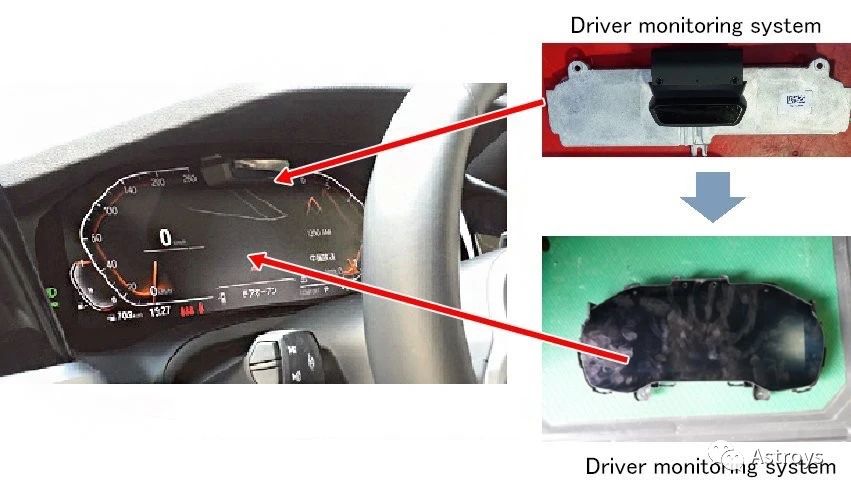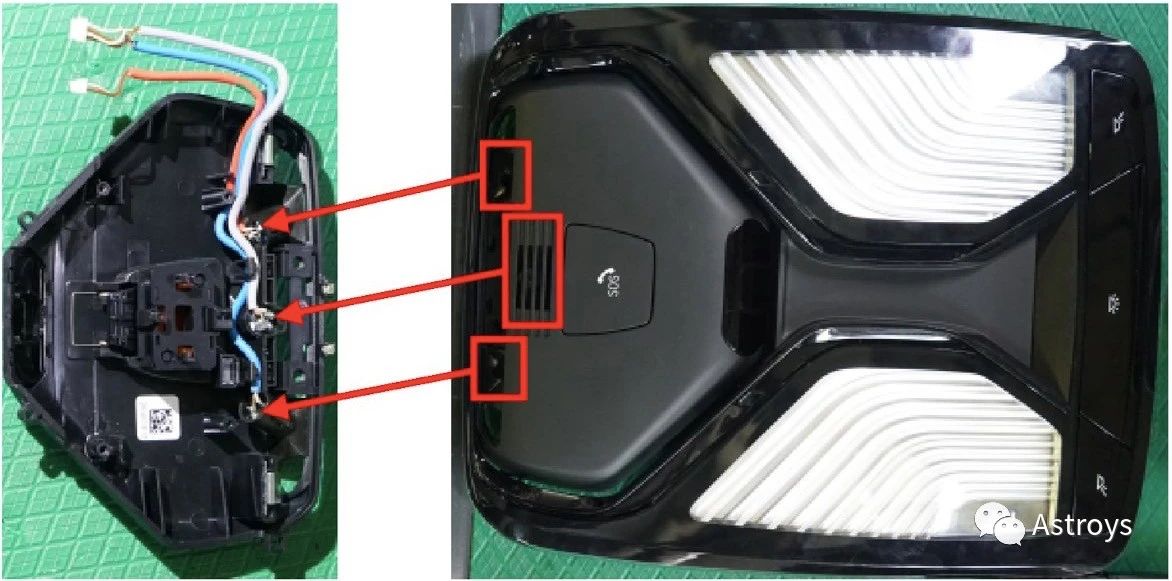This article is reproduced from the WeChat Official Account “Astroys”, written by Astroys.
Last time we introduced the ADAS sensor structure of the 2019 BMW 3 Series (320i), this time we will take a look at the various information inside the cockpit and the structure of the HMI system.
Instruments and Driver Monitoring
The fully digital instrument panel with a large display screen is used, which not only displays instrument information such as vehicle speed, but also displays navigation information, vehicle information and HMI information related to safe driving.
In addition, the instrument unit integrates the driver monitoring system unit, and a driver monitoring camera is installed above the center of the instrument, which mainly monitors whether the driver’s attention is focused during the ADAS operation.
The LCD digital instrument is produced by Bosch.

The main processor of the LCD digital instrument adopts Intel’s Atom processor (under the heat sink), which processes the graphics of the entire digital instrument, while communication and other control adopts the 32bit MPU of SPANSION. The LCD panel is LG’s product.

The driver monitoring system is produced by Delphi. Under certain conditions, it can achieve hands-free release.

Emergency Notification and Gesture ToF Sensor
The integrated unit of the car roof lining above the rearview mirror includes the emergency notification button and the ToF sensor used for gesture control. In addition, the microphone sensor for the BMW original security system is embedded.
The ToF sensor detects the movement of the driver’s hand and wrist, thereby realizing gesture operation of the vehicle system. The ToF sensor consists of a camera and four infrared irradiation parts. By using the camera to capture the infrared light irradiated and reflected by the object when it reaches the object, the movement of the hand and wrist is read.


The integrated unit of interior lights, emergency notification and ToF sensor is the product of Delphi (Ampop), composed of a main board. The control of the ToF sensor may adopt NXP’s 32bit MPU. The control of the entire unit adopts the RH58 series of Renesas.
This unit is equipped with three microphones for the original BMW security system and monitoring low-frequency sound. After unlocking the car, BMW’s security system will automatically start and monitor impacts and situations inside the car, and issue an alarm.

NGU (Next Generation head Unit)
The information equipment system integrates HMI and is mainly based on the Next Generation BMW Head Unit (NGU). This system displays vehicle information, settings, navigation, and audio control obtained by BMW iDrive on the central display screen and uses iDrive commands to operate.

BMW stated that the in-vehicle information equipment platform equipped in the 3 Series is the BMW iDrive operating system OS7 platform. OS7 features multiple operating methods, including gesture, voice, and touch screen operations, in addition to the original iDrive command operation, to help improve driver operability.

The NGU is produced by Harman. The NGU consists of one mainboard, which is located behind the central display screen. The NGU has a built-in 320Gbyte hard disk drive (HDD) containing map data, and can also save music data from a USB to the HDD.

The main processor on the control board of the NGU uses Intel’s Atom. It is expected that BMW OS7 system will run on this Atom. The sub-processor mounted on the mainboard is a RISC MPU and a 100 Mbps Ethernet chip.
Navigation and Audio Unit
The navigation and audio unit for BMW 320i is supplied by Harman. The unit integrates the navigation mainboard and audio mainboard into one unit.
 The OS7 platform integrates the HMI (including drawing and operation) into the NGU system. For complex graphics such as navigation maps, they may be directly connected to the image signal of the map relative to the display device. Other HMI drawings are performed by NGU utilizing various APIs connected as software and controlled through Ethernet.
The OS7 platform integrates the HMI (including drawing and operation) into the NGU system. For complex graphics such as navigation maps, they may be directly connected to the image signal of the map relative to the display device. Other HMI drawings are performed by NGU utilizing various APIs connected as software and controlled through Ethernet.

The main processor of the navigation board is Renesas’ R-Car H3. In addition, it is equipped with three-channel video output interface and VICS chip to obtain local traffic information.
The physical layer chip of Ethernet is equipped with two channels for external connection. Therefore, like NGU, Ethernet is used to connect other units.

The DSP on the sound board is possibly used for digital tuning. In addition, the output amplifier is equipped with 3 DF8546 from NXP, and the speaker structure is 12 channels × 45W.
Overall Architecture of ADAS and Information System
The characteristic of the BMW 3 series system is that the basic units are connected by Ethernet. ADAS and information/HMI are connected to different system Ethernet, but all networks are connected to the single unit on the body side of the BDC (Body Domain Controller). The BDC physically separates the Ethernet between the ADAS system and the information system, and also serves as the information receiver and sender. Therefore, the information of ADAS system can be displayed on the central display and the functions of ADAS system can be controlled through HMI.
Complex signals requiring real-time display, such as map display and camera image (image signal processed in 3D perspective), are connected to each unit as image signals. (Shown as a red line in the figure)

By integrating the HMI of driving control, navigation, and entertainment systems such as sound, the system mounted on BMW 320i achieves the most cutting-edge ADAS function and improves user operability, which can be said to be an active system with BMW’s usual style.
This article is a translation by ChatGPT of a Chinese report from 42HOW. If you have any questions about it, please email bd@42how.com.
